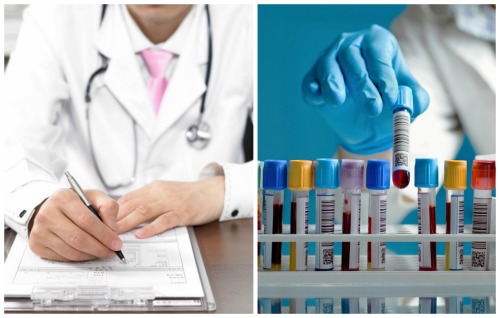 It is often said during interviews of prospective M.D./Ph.D. candidates that a career as a physician-scientist allows one to translate the two languages of medicine and research. Now that I’m approaching graduation from the Medical Scientist Training Program (MSTP) at Albert Einstein College of Medicine, I’m able to reflect on the milestones I passed in my “translation” efforts.
It is often said during interviews of prospective M.D./Ph.D. candidates that a career as a physician-scientist allows one to translate the two languages of medicine and research. Now that I’m approaching graduation from the Medical Scientist Training Program (MSTP) at Albert Einstein College of Medicine, I’m able to reflect on the milestones I passed in my “translation” efforts.
Learning the languages
December 2008—one week prior to winter break of my first year
Following sleepless nights preparing for my anatomy final, I could only stare blankly at a diabolical take-home science exam, dumbfounded by how one sequences a segment of “an alien genetic message.”
Einstein is quite adept at avoiding redundancy between medical school and graduate school courses, but the switching of gears required for both felt, at times, like a form of intellectual acrobatics. Medical school presented a litany of facts I had to commit to memory. Meanwhile, graduate courses focused on developing questions and experimental designs—a very different world.
What helped most was to engage actively with my MSTP classmates. Whether in specific anatomy classes, the Friday meetings with program directors or discussions with senior students, the presence of and examples set by my colleagues allowed me to endure.
Creating my own language
May 2012—in front of the fountains at Lincoln Center
I posed with my medical school friends of four years, celebrating as they made the official transition from students to doctors. It was a testament to campus life, where despite our differing schedules and career tracks we had continued to struggle and grow together, challenge and inspire each other. Yet in a sobering moment, I realized that when the mad rush of pictures ended and good-byes were said, I would have to drive back to the lab to collect samples for my timed experiment.
A harsh reality of being an M.D./Ph.D. is the sheer number of years spent in training. Whereas my med school friends steadily marched along the fast-paced, demanding trail of rotations punctuated by shelf exams and national board exams, my lab work felt like time spent in a boat floating in the middle of an obstinately still lake.
The challenge then was to put my research into the context of my desire to be a physician. Thankfully, my MSTP classmates and I were actively involved in numerous medical student committees, interest groups and volunteer organizations.
Simultaneously, the MSTP program presented opportunities such as weekly M.D./Ph.D. student clinics, monthly sessions where we discussed clinical cases and learning from a multitude of guest speakers.
Becoming a translator
September 2014—morning rounds on the pediatric floor at Montefiore
As a subintern, I had my cohort of patients, and one of them had taken a turn for the worse overnight. His lips were blistering from the chemotherapy he had received a week earlier and he could no longer eat. After explaining to his family that this was a known side effect and that the only course of action was to wait for his white blood cell counts to recover, I felt increasingly frustrated at the lack of a suitable intervention.
Fortunately, coming from a research-intensive medical program, I had witnessed numerous faculty members engage directly with translational research. Their passion to incorporate research and basic science knowledge into our daily clinical experiences allowed me to view medicine through the lens of my research training.
One day during a pediatric subinternship, an attending asked that I lead an afternoon teaching session in front of our medical team, presenting my thesis work. Having an ethos in which medicine and science are actively juxtaposed was crucial for my development as a physician-scientist.
Starting the dialogue
I remember thinking that 2016 represented a mythical year with the promise of my becoming a “Super-Doc,” able to move smoothly between the worlds of physician and scientist.
Instead, these past eight years have been training me for a role that synthesizes the two disciplines. During my graduate years, if I encountered a question or a problem with an aspect of my thesis project, I could exhaust myself with the seemingly limitless ways to approach it; in the clinical realm, questions or unknowns that arose often didn’t offer an immediate resolution. Now, when I am on the hospital floor, I find myself thinking like a scientist; in the laboratory, I am thinking like a physician. My passion for research finds meaning in medicine, while my observations in the hospital drive me, even at this early stage, back to the lab for more information.
The mark of a good “translator” is not merely the ability to understand and speak both languages—research and medical—but to let the two languages communicate. My MSTP training has prepared me to do just that, I hope, for the rest of my career.


Comments on this entry are closed.
Thoughtful post on the linguistic and logistical differences between the practice of medicine and biomedical research. I truly enjoyed reading it.
Best wishes for a long and productive career as a physician scientist. And do everything you can so as not to become burned out! Your hobbies look like good escape valves.